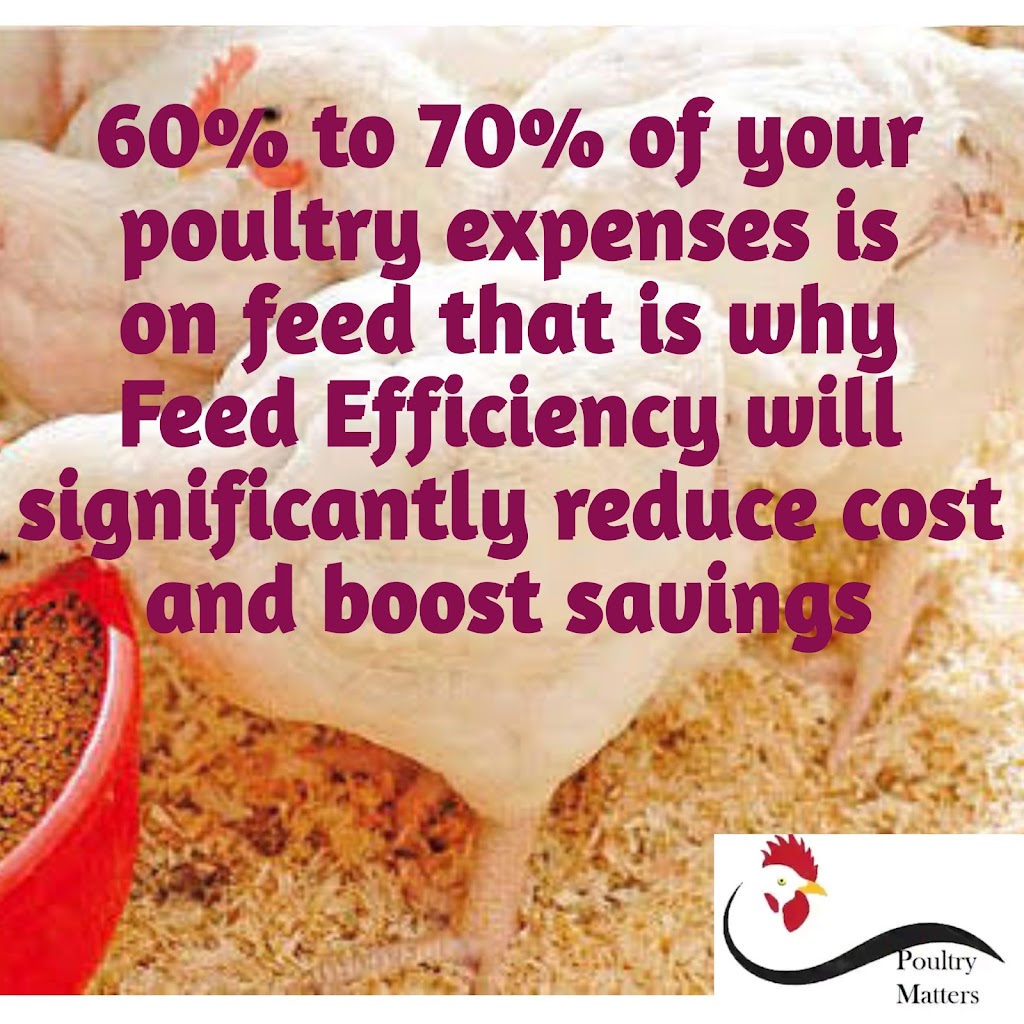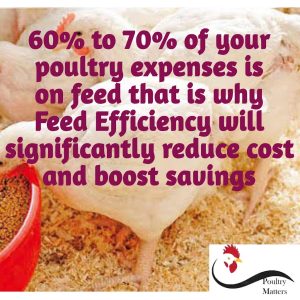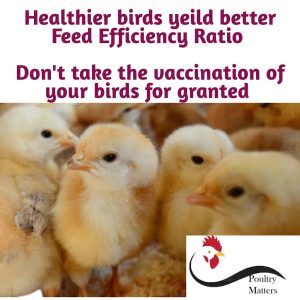Poultry cost management involves putting in place measures and structures for reducing expenses and maximize profitability, Profit maximization is very essential and can be achieved through cost reduction strategies. The cost optimization strategies in poultry operations is fundamental in the following aspects –
- Feed efficiency
- Housing equipment
- Health management
- Breeding management
- Manpower management
- Waste management
- Marketing strategies
- Cost reduction – Typically the poultry feed accounts for about 60% – 70% of the poultry cost, therefore, a proper Feed Efficiency significantly reduces operational cost,. The significant reduction in operational cost facilitates the farm’s improved savings and consequently profit.
- Faster investment turnover time -It enhances faster growth of the birds. Feed Efficiency reduces the wait-time before harvest and increases production cycles. The ability to increase production cycles and deliver more within the year helps the poultry farmer increase earnings significantly to impact on business bottom -line.
- Healthier flock – Efficiency in the feeding of the bird, boost improved growth rate and body weight of the birds. This gives indication that the birds are healthy which usually lead to greater market value for the birds. A high market value implies higher selling price which consequently lead to higher earnings and profit for the poultry investor
Guidelines to Achieve Feed Efficiency on the Poultry Farm
Maximizing feed efficiency begins with providing your birds high-quality, well-formulated feed that meets their specific nutritional needs. Poultry birds have varying dietary requirements at different stages of growth — from day-old chicks to mature birds. These requirements must be met precisely to support optimal health, growth, and productivity.
To achieve feed efficiency on your farm:
Use Age-Appropriate Feed Formulations – The nutritional content of feed must be tailored to the specific age and developmental stage of the birds. For instance:
-
- Starter feed – This ideal for chicks from one-day old to 4weeks old. Starter feed is very rich in protein, thereby, supporting rapid growth.
- Grower feed – This is served to birds from about 3wees old to about 7weeks (depending upon the purposes of production. Grower feeds support steady development with a balanced mix of protein, energy, and essential nutrients.
- Finisher feed- This is more relevant to broilers, particularly when approaching market age. Finisher feed promote efficient weight gain in the flock.
- Layer feed (for egg-laying birds) should contain adequate calcium and vitamins to support healthy egg production.
Maintain Feed Quality
Always ensure that feed is fresh, free from contaminants, and stored in a clean, dry place to prevent spoilage or nutrient loss.
Monitor Feed Intake and Bird Performance
Keep accurate records of daily feed consumption and bird growth. This helps in early detection of issues like underfeeding, overfeeding, or poor feed conversion.
Provide Clean Water Consistently
Water is essential for feed digestion and nutrient absorption. Ensure a continuous supply of clean, cool water.
Avoid Feed Wastage
Use the right feeders, fill them correctly, and adjust them as birds grow to minimize spillage and contamination.
By carefully managing the feed provided to the birds according to their age and nutritional needs, consequently the feed conversion rates is improved. This leads to reduced costs, and enhance overall productivity on the farm.
Truly, Feed Efficiency in the birds implies that the birds are healthy, however, efficiency cannot be achieved when tried with sick birds. Therefore, it is compulsory to do regular check on the birds and ensure vaccination is not neglected. In addition, it is important that the right breed of birds be acquired for the farm.



